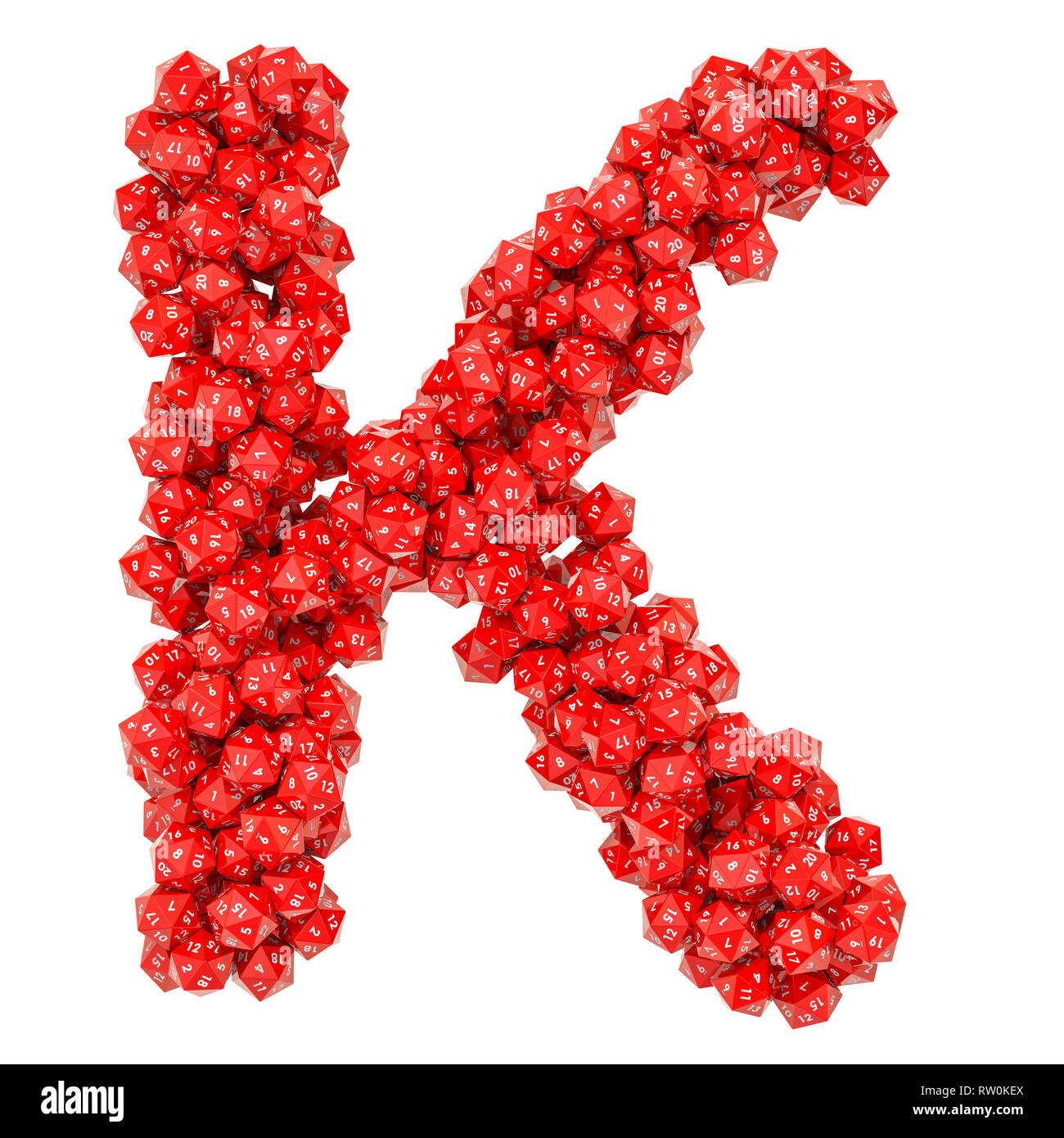Understanding 'K' In Tech: A Look At What 'k Johar' Can Show Us
Have you ever stopped to consider how a single letter, like 'K', pops up in so many different corners of our tech world? It's really quite fascinating, you know, how this one character can mean so much depending on where you find it. When we think about 'k johar' as a starting point, it's not about a person or a celebrity here; it's actually about diving into the surprisingly varied roles the letter 'K' plays in the tech discussions we often see. It's almost like a little puzzle, figuring out what 'K' signifies in each context.
So, what exactly does 'K' stand for in the gadgets and systems we use every day? It turns out, it's a bit of a chameleon, changing its meaning to fit the situation. From the very heart of your computer's processing power to the way your screen displays images, and even to simple keyboard shortcuts, 'K' is there, playing a rather important part. It's truly interesting how a seemingly simple letter can hold such diverse technical weight.
Today, we're going to pull back the curtain on these different 'K's. We'll explore what it means when you see 'K' in a CPU model, how it relates to screen resolutions, and even its role in some handy computer functions. It's a way, in some respects, to really get to grips with the subtle language of technology that surrounds us, and to see how this 'k johar' focus helps us understand the digital tools we rely on.
Table of Contents
- K in Processors and Motherboards: Power and Performance
- K in Display Technology: Resolution Explained
- K in Software and Shortcuts: Everyday Utility
- K in Material Science and Engineering
- Frequently Asked Questions About 'K' in Tech
- Conclusion
K in Processors and Motherboards: Power and Performance
When you're looking at computer parts, especially the brain of your machine, the CPU, you'll often come across the letter 'K'. It's a pretty big deal in the world of processors and motherboards, signifying some rather important characteristics about performance and capability. So, for anyone interested in building or upgrading a computer, understanding this 'K' is, you know, quite essential.
The Intel 'K' Suffix: Unlocked Potential
For Intel processors, that little 'K' at the end of a model number, like in a 13600KF, tells you something very specific and, frankly, exciting: it means the processor is "unlocked." What does "unlocked" really mean? Well, it basically means that you, the user, have the ability to adjust its clock speed beyond the factory settings. This practice, known as overclocking, can squeeze out extra performance for demanding tasks like gaming or video editing. It's a feature that many enthusiasts and power users really appreciate, as it gives them more control over their system's potential. However, it's also something that requires a bit of know-how, as pushing a CPU too far can cause instability or even damage. So, it's a bit of a balancing act, you see.
The 'K' suffix, then, is a clear signal that a chip is built for those who want to fine-tune their system's speed. It's typically found on higher-end processors, because, well, those are the ones that users are most likely to want to push to their limits. This distinction is pretty important when you're comparing different CPU models, as a 'K' chip offers a level of flexibility that non-'K' chips simply don't. It's a key differentiator, to be honest, for anyone looking for that extra bit of oomph from their computer.
Motherboard Compatibility: The B760M-K
Moving from the CPU to the motherboard, you might also spot a 'K' in a model name, like the ASUS B760M-K. This isn't about overclocking, though. In this context, the 'K' usually signifies a specific model or series within a manufacturer's lineup, often indicating an entry-level or more basic option within a particular family of motherboards. The ASUS B760M-K, for example, is described as an "entry model" in their "Master series." This means it's designed to be a solid, reliable foundation for a computer, but perhaps without all the bells and whistles you'd find on more premium boards.
When it comes to pairing this motherboard with a CPU, there are some practical considerations. The text mentions that the B760M-K is generally recommended for CPUs "below 13600KF." While it can run a 13600KF for gaming, it might not handle the sustained stress of a "torture test" (a demanding benchmark that pushes the CPU to its limits) without throttling. This is because entry-level motherboards might have less robust power delivery systems or cooling solutions compared to their higher-end counterparts. So, while it's a perfectly capable board for many users, it's important to match it with a CPU that won't overwhelm its capabilities, particularly if you're planning on heavy workloads beyond just casual gaming. It's all about balance, you know, to get the best out of your components.
Spotting Disassembled 'K' Series CPUs
A rather important warning for anyone buying Intel processors, especially the 'K' series, is the prevalence of "disassembled" or "tray" CPUs appearing online. The text points out that a lot of 13th and 14th generation Intel Core processors, including all those with the 'K' suffix, are being sold this way. These aren't necessarily faulty, but they are often chips that have been removed from pre-built systems or sold in bulk to system integrators, rather than in their original retail packaging with a warranty. This can be a bit of a gamble, honestly.
When you buy a disassembled CPU, you might not get the full manufacturer's warranty, or it might be harder to verify its authenticity and condition. The text specifically warns that "disassembled CPUs are mixed with a large number of refurbished or even problematic CPUs." This means you could end up with a chip that's been used, repaired, or might have underlying issues, even if it looks fine on the outside. So, while the price might seem tempting, it's really important to be cautious and buy from reputable sources to avoid potential headaches. It's a buyer beware situation, basically, especially with these 'K' suffix chips that are so popular.
K in Display Technology: Resolution Explained
Beyond computer components, the letter 'K' also plays a very big role in how we talk about screen resolution, especially when discussing monitors, TVs, and even phone displays. You've probably heard terms like "2K" and "4K" thrown around, and they refer to the sharpness and detail of the images you see. It's a bit of a numerical shorthand, really, that helps us understand picture quality.
Demystifying 2K and 4K Displays
So, what exactly do "2K" and "4K" mean? These terms generally refer to the approximate horizontal pixel count of a display. For instance, "4K" typically means a display has roughly 4000 pixels horizontally, with the most common resolution being 3840x2160. This is a very high pixel count, meaning images look incredibly sharp and detailed. "2K" is a bit more ambiguous, but it most commonly refers to a resolution of 2560x1440. This is often called "QHD" (Quad High Definition) as well. The text points out that "2K is not twice the pixels of 1080P, but 1.7 times." This is a crucial distinction, as some people mistakenly think 2K is just double 1080P, which is 1920x1080.
The naming convention itself can be a little confusing, too. The text suggests that "2K" likely came about as a way to position 2560x1440 between 1080P and 4K. Since it's lower than 4K but higher than 1080P, and starts with a '2' in its horizontal pixel count (2560), "2K" just sort of stuck. It's a simple way, you know, to categorize displays by their visual fidelity. Understanding these terms helps you choose the right screen for your needs, whether it's for gaming, watching movies, or just everyday computer use.
Pixel Counts and Visual Clarity
The more pixels a screen has, the more detail it can display, leading to a clearer and sharper image. The text reminds us that "4K is four times the pixels of 1080P." This means a 4K display packs a tremendous amount of information into its screen, making everything from text to high-resolution photos look incredibly crisp. Imagine, if you will, looking at a photo on a 1080P screen versus a 4K screen; the difference in fine details can be pretty dramatic. This is why 4K has become the standard for high-end televisions and monitors.
The concept of "pixel points" is fundamental here. Pixels are the tiny individual dots that make up an image on a screen. The more of these dots you can fit into a given area, the higher the pixel density, and thus the sharper the image. The text suggests, "Take out your phone and point it at the screen to zoom in," as a way to visualize pixels. This hands-on approach really helps to understand that these 'K' terms are just shorthand for a specific number of these tiny dots, which ultimately dictates how clear and immersive your visual experience will be. It's quite straightforward, when you think about it.
K in Software and Shortcuts: Everyday Utility
The letter 'K' isn't just about hardware or display specifications; it also shows up in the software side of things, particularly in useful keyboard shortcuts and even in advanced programming techniques. These applications of 'K' are often about making our digital lives a little easier or more efficient. It's a rather versatile letter, isn't it?
Win + K for Wireless Projection
One very handy shortcut involving 'K' is "Win + K." This combination, when pressed on a Windows computer, instantly brings up the system's built-in wireless projection feature. This is incredibly useful for connecting your computer to other screens without needing cables, like a smart TV, a projector, or a streaming device. It's a quick way to share your screen for presentations, movie nights, or even just to have a bigger display for your work. It just pops up, basically, making the connection process quite simple.
Once you've successfully connected to a display using Win + K, you might then use "Win + P." This second shortcut lets you switch between different display modes, such as duplicating your screen (showing the same thing on both displays), extending your screen (using the second display as an extension of your desktop), or only showing the content on the second screen. These shortcuts really streamline the process of managing multiple displays, making it much more convenient for users to adapt their setup to their current needs. It's a little trick, you know, that saves a lot of time.
K-Series Quantization in Llama.cpp
In a more technical and specialized area, the letter 'K' also appears in the context of "K-series quantization methods" within something like Llama.cpp. This is a fascinating development in the world of artificial intelligence and large language models. Quantization, in simple terms, is a technique used to reduce the memory footprint and computational requirements of these massive AI models. Think of it as making a very large file much smaller without losing too much of its essential information. It's a pretty clever way, actually, to make these powerful models run more efficiently on less powerful hardware.
The text notes that the "K-series quantization method" is a newer, improved approach that further reduces memory usage. Its key characteristic is "hierarchical" processing, though the exact meaning of 'K' in this context isn't explicitly stated. This method involves not just quantizing the weights (the core data of the AI model) but doing so in a structured, layered way to achieve even greater compression. This innovation is quite significant because it makes advanced AI models more accessible to a wider range of devices, from personal computers to even some mobile devices. It's a step forward, you know, in bringing powerful AI capabilities to more people.
K in Material Science and Engineering
Beyond the digital world, the letter 'K' also has a specific and important meaning in the field of material science, particularly when we talk about how materials react to changes in temperature. It's a fundamental concept for engineers and designers, especially when creating things that need to withstand varying heat conditions. This 'K' is really about physical properties, you see.
Understanding Thermal Expansion Coefficient (CTE)
In material science, 'K' often stands for Kelvin, which is a unit of temperature. When you see a measurement like "1E-6 /K" or "1E-6 /℃" (per degree Celsius), you're looking at a "metal expansion coefficient" or "CTE" (Coefficient of Thermal Expansion). This coefficient tells us how much a material will expand or contract for every degree of temperature change. It's a very important property, especially when designing things that will experience temperature fluctuations, like bridges, engine parts, or even electronic components. Most materials, as the text notes, will expand when heated. This seems pretty basic, but the amount they expand can vary wildly, and that's where CTE comes in.
The significance of CTE is quite high, particularly when trying to "avoid phase transition problems." A phase transition is when a material changes its state, like melting or boiling, but also more subtle changes in its internal structure. If materials with different CTEs are joined together and then heated or cooled, they will expand or contract at different rates. This can lead to stress, warping, or even breakage. For example, in electronics, if a circuit board and a chip attached to it expand at very different rates, the solder joints could crack over time. So, understanding and managing CTE is absolutely critical for ensuring the long-term durability and reliability of many products. It's a pretty precise science, actually, making sure everything expands just right.
Frequently Asked Questions About 'K' in Tech
People often have questions about what 'K' means in different tech contexts. Here are some common ones, reflecting the varied roles of this letter:
What does the 'K' in Intel CPU model numbers like 13600KF actually mean for me?
Well, the 'K' in an Intel CPU model, like the 13600KF, means that the processor is "unlocked." This is pretty neat because it lets you, the user, adjust its clock speed beyond the standard settings, a process called overclocking. It's a feature for folks who want to squeeze out a bit more performance for demanding tasks, but it does mean you'll need to know a little about managing temperatures and system stability. The 'F' by the way, just means it doesn't have integrated graphics, so you'll need a separate graphics card.
How does '2K' resolution compare to '4K' and '1080P' in terms of visual quality?
When we talk about 'K' in display resolutions, it's about how many pixels are on your screen. '1080P' (Full HD) has 1920 pixels horizontally. '2K' typically refers to 2560x1440 pixels, which is about 1.7 times the pixels of 1080P, offering a noticeably sharper image. '4K' (Ultra HD) is much higher at 3840x2160 pixels, which is four times the total pixels of 1080P. This means 4K offers incredibly crisp and detailed visuals, making it the top choice for clarity. So, basically, the higher the 'K' number, the more pixels, and the sharper the picture, generally speaking.
What's the main function of the Win + K shortcut on a Windows computer?
The Win + K shortcut is a really useful little tool on Windows computers. Its main job is to quickly bring up the system's built-in wireless display connection feature. This lets you easily connect your computer to devices like smart TVs, projectors, or other wireless displays without needing any cables. It's super handy for presentations, sharing content on a bigger screen, or just extending your workspace wirelessly. You just press those two keys, and a menu pops up to help you connect.
Conclusion
So, as we've explored, the letter 'K' is far from a simple character in the world of technology. When we consider 'k johar' as a point of reference, it truly opens up a discussion about the many different and important roles 'K' plays across various tech domains. From the power-packed 'K' in Intel CPUs that gives enthusiasts control over performance, to the resolution clarity of '2K' and '4K' displays that shape our visual experiences, and even to the practical shortcuts like Win + K that make our daily computer use smoother, 'K' is everywhere. It also extends into more specialized areas, like the 'K-series' quantization that makes advanced AI models more accessible, and the scientific 'K' in thermal expansion coefficients that ensures our materials hold up under stress. It's a pretty diverse set of meanings, really, all stemming from that one letter.
Understanding these different facets of 'K' helps us make better choices, whether we're buying computer parts, setting up a new display, or just trying to get the most out of our software. It shows us that even the smallest details in tech can carry significant weight and impact. It's quite interesting, to be honest, how much information a single letter can convey when you know where to look. To learn more about computer hardware and software, feel free to browse our site, and for deeper dives into specific topics, you can also check out our articles on display technology. It's always a good idea to keep learning, you know, about the tools that shape our digital lives.

Letter,k,capital letter,alphabet,abc - free image from needpix.com

Capital Letter K Images

Top 999+ k letter images in heart download – Amazing Collection k